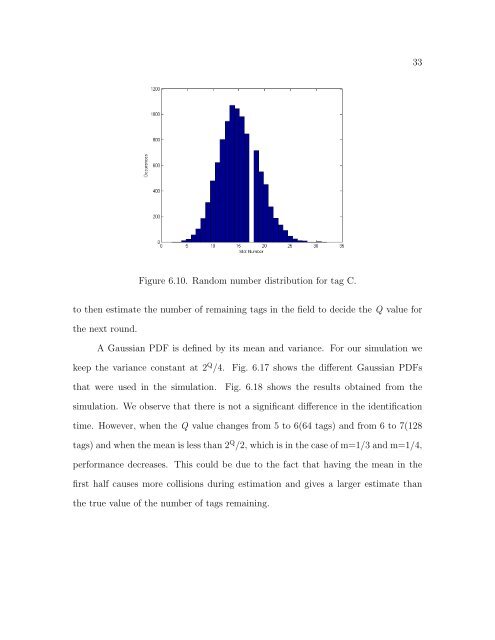utilizing physical layer information to improve rfid tag
utilizing physical layer information to improve rfid tag
utilizing physical layer information to improve rfid tag
You also want an ePaper? Increase the reach of your titles
YUMPU automatically turns print PDFs into web optimized ePapers that Google loves.
Figure 6.10. Random number distribution for <strong>tag</strong> C.<br />
<strong>to</strong> then estimate the number of remaining <strong>tag</strong>s in the field <strong>to</strong> decide the Q value for<br />
the next round.<br />
A Gaussian PDF is defined by its mean and variance. For our simulation we<br />
keep the variance constant at 2 Q /4. Fig. 6.17 shows the different Gaussian PDFs<br />
that were used in the simulation. Fig. 6.18 shows the results obtained from the<br />
simulation. We observe that there is not a significant difference in the identification<br />
time. However, when the Q value changes from 5 <strong>to</strong> 6(64 <strong>tag</strong>s) and from 6 <strong>to</strong> 7(128<br />
<strong>tag</strong>s) and when the mean is less than 2 Q /2, which is in the case of m=1/3 and m=1/4,<br />
performance decreases. This could be due <strong>to</strong> the fact that having the mean in the<br />
first half causes more collisions during estimation and gives a larger estimate than<br />
the true value of the number of <strong>tag</strong>s remaining.<br />
33
















